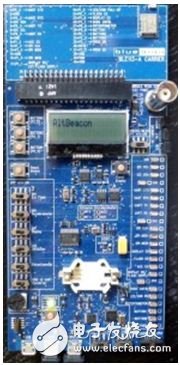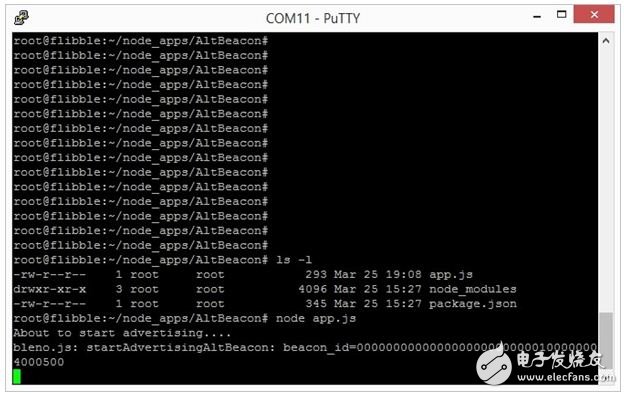We don't have an AltBeacon in the traditional sense yet, but I have several Bluetooth development boards at my disposal. These boards are smart microcontrollers with built-in Bluetooth protocol stacks, making them ideal for prototyping. They come with various peripheral interfaces and pins, allowing for easy testing, learning, or even direct product integration. I decided to build a Beacon application using these boards and test it with the Android Museum Guide app.
I'm currently using the Bluegiga DK Bluetooth Low Energy Development Kit and the Intel Edison Development Board. The Bluegiga board is programmed using BGScript, a simple scripting language that comes with a rich set of libraries. On the other hand, the Intel Edison runs Linux, offering multiple programming options. Since I’m more comfortable with JavaScript, I opted to use Node.js along with the Noble library for Bluetooth communication.
**Turning Bluegiga into AltBeacon**
BGScript is straightforward and provides extensive functionality through its framework. Creating a Bluegiga application involves writing scripts and configuration files using a text editor. Once written, the firmware can be directly uploaded to the board via USB using the Bluegiga SDK.
BGScript includes variable declarations, array handling, and event handlers—key components of the programming model. These callbacks are triggered when specific events occur, such as system boot or connection changes.
Implementing a Beacon on any platform requires interaction with the Generic Access Profile (GAP), which involves setting up broadcast packets and configuring the broadcasting parameters.
The Bluegiga implementation of AltBeacon starts with variable declarations. For example, an array is used to store the flags field, which indicates support for Bluetooth Smart and/or BR/EDR.
Broadcast data types, defined in the Bluetooth Core Specification Addendum, include a length byte and a data type byte. These values are standardized in the GAP numbering document.
Here’s the first part of the code for defining the flags in the `system_boot` event handler:

In addition to the flags, I also filled the last 20 bytes of the array with AltBeacon-specific data, following the format outlined in the manufacturer-specific data field.

Next, I set a local name for the Beacon device, which appears in scan results from a central device like a smartphone. This is another type of broadcast data, so I configured it separately.

Finally, I configured the broadcast parameters by calling relevant Bluegiga functions and passing the arrays.

With this setup, my custom AltBeacon on the Bluegiga board was ready to go.

Another option: AltBeacon on Intel Edison
Node.js offers a modular approach, with many available modules. The "Bleno" module is particularly useful for creating Bluetooth peripherals, including support for iBeacon. However, it doesn’t natively support AltBeacon, so I modified the Bleno source code to add this functionality.
I added new features to the standard `bleno.js` file and created a node.js application to start broadcasting in the AltBeacon format. The code is concise and efficient, as shown below:

To run the application, I connected to the Intel Edison via SSH or telnet using Putty and executed the script from the command line.

This project allowed me to explore how different platforms can be used to implement AltBeacon, providing a flexible and cost-effective way to experiment with Bluetooth Low Energy technology.
Stainless Steel Radiator
Radiators in this case are manufactured with Stainless steel (SS304, SS316 and SS316L).
These radiators are manufactured with both 1mm CRCA sheet and 1.2 mm CRCA sheet as required and centre distance varying from 600 mm to 4000 mm. Stainless steel radiators can be offered with and without paint.
Through the method, the stainless steel plate type radiator for the transformer is simple in structure, free of complex treatment process on the surface of the radiator, not prone to oxidizing and corroding, long in service life, and high in welding strength.
Stainless Steel Radiator,Stainless Steel Transformer Radiator,Stainless Steel Cooling Radiator,Stainless Steel Weather Proof Radiator
Shenyang Tiantong Electricity Co., Ltd. , https://www.ttradiator.com